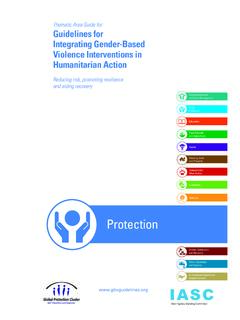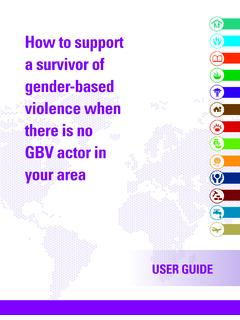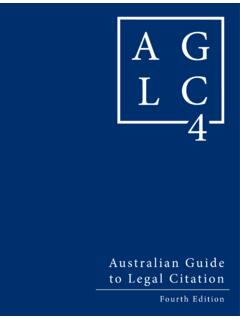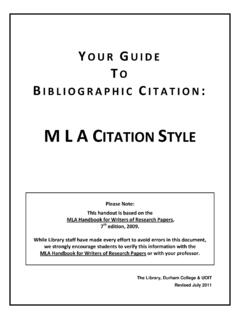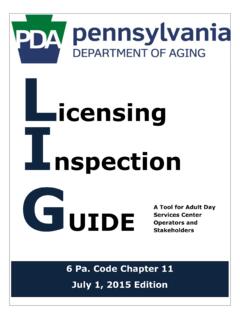Transcription of IASC - Reducing risk, promoting resilience and
1 IASCI nter-Agency Standing CommitteeChild ProtectionEducationHealthHousing, Land and PropertyHumanitarian Mine ActionLivelihoodsNutritionProtectionShel ter, Settlement and RecoveryWater, Sanitation and HygieneHumanitarian Operations Support SectorsGuidelines for Integrating Gender-Based Violence Interventions in Humanitarian Action Camp Coordination and Camp ManagementFood Security and AgricultureReducing risk, promoting resilience and aiding recoveryIASCI nter-Agency Standing Committee< > < >Guidelines for Integrating Gender-Based Violence Interventions in Humanitarian Action Reducing risk, promoting resilience and aiding recoveryThe Gender-Based Violence Area of Responsibility (GBV AoR) is a global-level forum for coordination on GBV in humanitarian settings.
2 The group brings together NGOs, United Nations agencies, academics and others under the shared objective of ensuring more predictable, accountable and effective prevention of and response to GBV in settings affected by emergencies. In the humanitarian system, the GBV AoR constitutes an area of responsibility within the Global Protection Cluster.< >We would like to thank the United States Government for its generous financial support for the revision for Integrating Gender-Based Violence Interventions in Humanitarian Action Reducing risk, promoting resilience and aiding recovery< >Guidelines for Integrating Gender-Based Violence Interventions in Humanitarian Action Reducing risk, promoting resilience and aiding recoveryThe Gender-Based Violence Area of Responsibility (GBV AoR) is a global-level forum for coordination on GBV in humanitarian settings.
3 The group brings togetherNGOs, United Nations agencies, academics and others under the shared objective ofensuring more predictable, accountable and effective prevention of and response toGBV in settings affected by emergencies. In the humanitarian system, the GBV AoRconstitutes an area of responsibility within the Global Protection Cluster.< >For more information and to download electronic versions of the GBV Guidelinesand Thematic Area Guides, please visit < >. We would like to thank the United States Government for its generous financial supportfor the revision process.
4 < >IASCI nter-Agency Standing CommitteeChild ProtectionEducationHealthHousing, Land and PropertyHumanitarion Mine ActionLivelihoodsNutritionProtectionShel ter, Settlement and RecoveryWater, Sanitation and HygieneCamp Coordination and Camp ManagementFood Security and AgricultureIASCI nter-Agency Standing CommitteeHumanitarian Operations Support SectorsIASCI nter-Agency Standing CommitteeGuidelines for Integrating Gender-Based Violence Interventions in Humanitarian Action Reducing risk, promoting resilience and aiding recoveryChild ProtectionEducationHealthHousing, Land and PropertyHumanitarian Mine ActionLivelihoodsNutritionProtectionShel ter, Settlement and RecoveryWater, Sanitation and HygieneHumanitarian Operations Support SectorsCamp Coordination and Camp ManagementFood Security and Guidelines represent a comprehensive revision to the original 2005 Inter-Agency Standing Committee (IASC) Guidelines for Gender-Based Violence Interventions in Humanitarian Settings.
5 The lead authors were Jeanne Ward and Julie Lafreni re, with support from Sarah Coughtry, Samira Sami and Janey revision process was overseen by an Operations Team led by UNICEF. Operations team members were: Mendy Marsh and Erin Patrick (UNICEF), Erin Kenny (UNFPA), Joan Timoney (Women s Refugee Commission) and Beth Vann (independent consultant), in addition to the authors. The process was fur-ther guided by an inter-agency advisory board ( Task Team ) of 16 organizations including representatives of the global GBV Area of Responsibility (GBV AoR)
6 Co-lead agencies UNICEF and UNFPA as well as UNHCR, UN Women, the World Food Programme, expert NGOs (the American Refugee Committee, Care International, Catholic Relief Services, ChildFund International, InterAction, International Medical Corps, International Rescue Committee, Oxfam International, Plan International, Refugees International, Save the Children and Women s Refugee Commission), the Centers for Disease Control and Prevention and independent consultants with expertise in the field. The considerable dedication and contributions of all these partners has been critical throughout the entire revision content and design of the revised Guidelines was informed by a highly consultative process that involved the global distribution of multi-lingual surveys in advance of the revision process to help define the focus and identify specific needs and challenges in the field.
7 In addition, detailed inputs and feedback were received from over 200 national and international actors both at headquarters and in-country, rep-resenting most regions of the world, over the course of two years and four global reviews. Draft content of the Guidelines was also reviewed and tested at the field level, involving an estimated additional 1,000 individuals across United Nations, INGO and government agencies in nine locations in eight Operations and Task Teams would like to extend a sincere thank you to all those individuals and groups who contributed to the Guidelines revision process from all over the world, particularly the Clus-ter Lead Agencies and cluster coordinators at global and field levels.
8 We thank you for your input as well as for your ongoing efforts to address GBV in humanitarian would also like to thank the United States Government for its generous financial support for the revision Global Reference Group has been established to help promote the Guidelines and monitor their use. The Reference Group is led by UNICEF and UNFPA and includes as its members: American Refugee Committee, Care International, the Centers for Disease Control and Prevention, ChildFund International, International Medical Corps, International Organization for Migration, International Rescue Committee, Norwegian Refugee Council, Oxfam, Refugees International, Save the Children, UNHCR and Women s Refugee more information about the implementation of the revised Guidelines, please visit the GBV Guide-lines website at < >.
9 This website hosts a knowledge repository and provides easy access to the Guidelines and related tools, collated case studies and monitoring and evaluation results. Arabic, French and Spanish versions of the Guidelines and associated training and rollout materials are available on this website as designations employed and the presentation of the material in this publication do not imply the expression of any opinion whatsoever on the part of the United Nations or partners concerning the legal status of any country, territory, city or area or its authorities, or concerning the delimitation of its frontiers or by: Prographics, citation : Inter-Agency Standing Committee.
10 2015. Guidelines for Integrating Gender-Based Violence Interventions in Humanitarian Action: Reducing risk, promoting resilience and aiding GuidelinesiiiForewordHumanitarian action is most effective when it focuses not only on meeting the immediate needs of those most affected, but also on protecting the rights and long-term wellbeing of the most vulnerable at every stage. Gender-based violence is among the greatest protection challenges individuals, families and communities face during humanitarian emergencies. Accounts of horrific sexual violence in conflict situations especially against women and girls have captured public attention in recent years.
